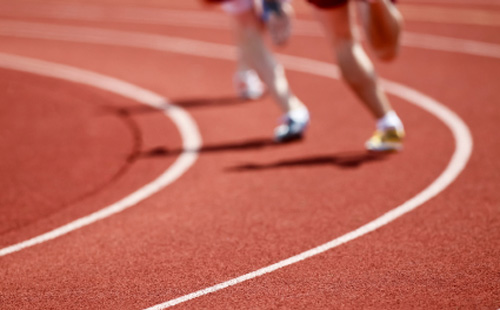A Shoe Guide For Runners
It is a common misconception that a runner only needs one pair of shoes. True, the beauty of the sport is that it requires minimal financial investment and in theory, you could get by with a pair of shoes, a shirt, pair of shorts and little else. But then you would be missing out on all the wonderful benefits of a diversified shoe rotation, which could help to improve your running form, stamina, and technique. In this article, we review different types of shoes for different runs and highlight some of the benefits along the way.
Track Workout
At first, the track can be intimidating, especially with terms thrown around Yasoo 800s and Pyramid. But rest assured it is not as scary as you might think once you give it a try. The point of a track workout is to work on technique, form, lactic threshold and diversifying your speeds. For this type of workout, you will want a lightweight and lower profile shoe. This will give you a high rate of energy return, as well, the shoe will offer good proprioception and ground feel to help improve your form.
Tempo Runs
Tempo Runs are an essential part of any runner’s training regime who is preparing for a race. Although the pace of the tempo run may vary slightly from run to run, the primary goal is to achieve a pace that is slightly faster than your goal race pace. For this type of workout, you are teaching your body to be able to handle the stresses of race day as well as work on more technical elements, such as turnover and consistent pacing.
The tempo run should simulate a race-like effort so it is important to wear the shoes you will use to race. For many runners racing anything over a half-marathon, a racing flat might be too minimal. This would be a good opportunity to wear a shoe with slightly more cushioning, slightly more structure and perhaps (depending on your foot shape) something with a wider toe-box to accommodate any swelling on race day. Overall, you will still want this shoe to be lightweight and very responsive to help with speed and turnover.
Find shoes perfect for speed workouts.
Long Runs
Everyone has heard of the LSR or the Long Slow Run. This is a time to allow you body to adapt to the distance of your upcoming race, as well as experiment with nutrition and hydration. This is a gradual build up and often takes its biggest toll on your body. For more advanced runners, your pace is slightly slower than your intended race pace. For beginner/intermediate runners, you are focusing on adaptation and therefore working at a more comfortable pace. Although you should always be conscious of your form, this is a time when you would want to consider wearing more forgiving shoes. As your body fatigues, your form starts to deteriorate and this can lead to potential injuries. Choose a comfortable shoe that offers more cushion (depending on your foot type and personal preference) and more structure. If you have a tendency to mildly pronate, you may want to consider a stability shoe.
See our cushioned shoes for long runs.
Recovery Runs
Recovery runs are not always utilized by runners and for those who do use it often misuse it. As you can probably guess, it is intended to help with recovery. This means that it should be a very slow, easy run. Leave your ego at the door as the purpose is to help flush out your legs and improve circulation without causing excessive stress. For this run, you will want a shoe that offers support and comfort. A popular choice is a maximalist style shoe. This type of shoe offers approximately 30 plus millimetres of cushioning with a stiff sole and aggressive forefoot rocker. This allows the shoe to assist the momentum of the run while reducing the impact on tired legs.
Check out our most popular recovery shoes.
Trail Runs
If there is one point to get across, it is to never wear road shoes on the trails. One of the primary reasons is that it will cut the life of your shoes in half. The rocks and roots will take a toll on your shoes. So, you want to make sure they are up for the job. The same rule applies for trail shoes on the road, so respect the shoe and use it for its intention.
After making such a bold statement, there are some caveats to note. Many fast and accomplished trail runners have been known to wear road racing flats on some non-technical trails. Also, depending on where you live, your road shoes may be just fine for a flat and hard-packed trail. However, you will want to wear trail-specific shoes if you are running in conditions that are really dry, wet, icy or moderately technical. Trail shoes offer a lot of vast array of different features from waterproof coating to toe-guards to rock plates. You may need some of these features, but most likely not all depending on where you call home.
There are, however, some essential features that define a trail shoe. The first and most important are the lugs on the sole of your shoe. These improve traction on the trails. Another feature your trail shoe will have is a rock plate which protects your feet from rocks and roots. Finally, the shoe itself will be constructed with durability in mind. Therefore the upper will usually have a tighter weave to keep out dirt and debris.
Our Selection of Trail Shoes
With these tips, hopefully, you will have a better understanding of the different types of running shoes available and which are suited for your style of training and type of running. By no means do you need a different shoe for each workout, but it is important to diversify your shoe repertoire to fully realize the different intent of each type of workout.
First timers in our run clinics get a free pair of shoes (up to $150) when they sign up for our Shoe Package. Click here to learn more!




No Comments